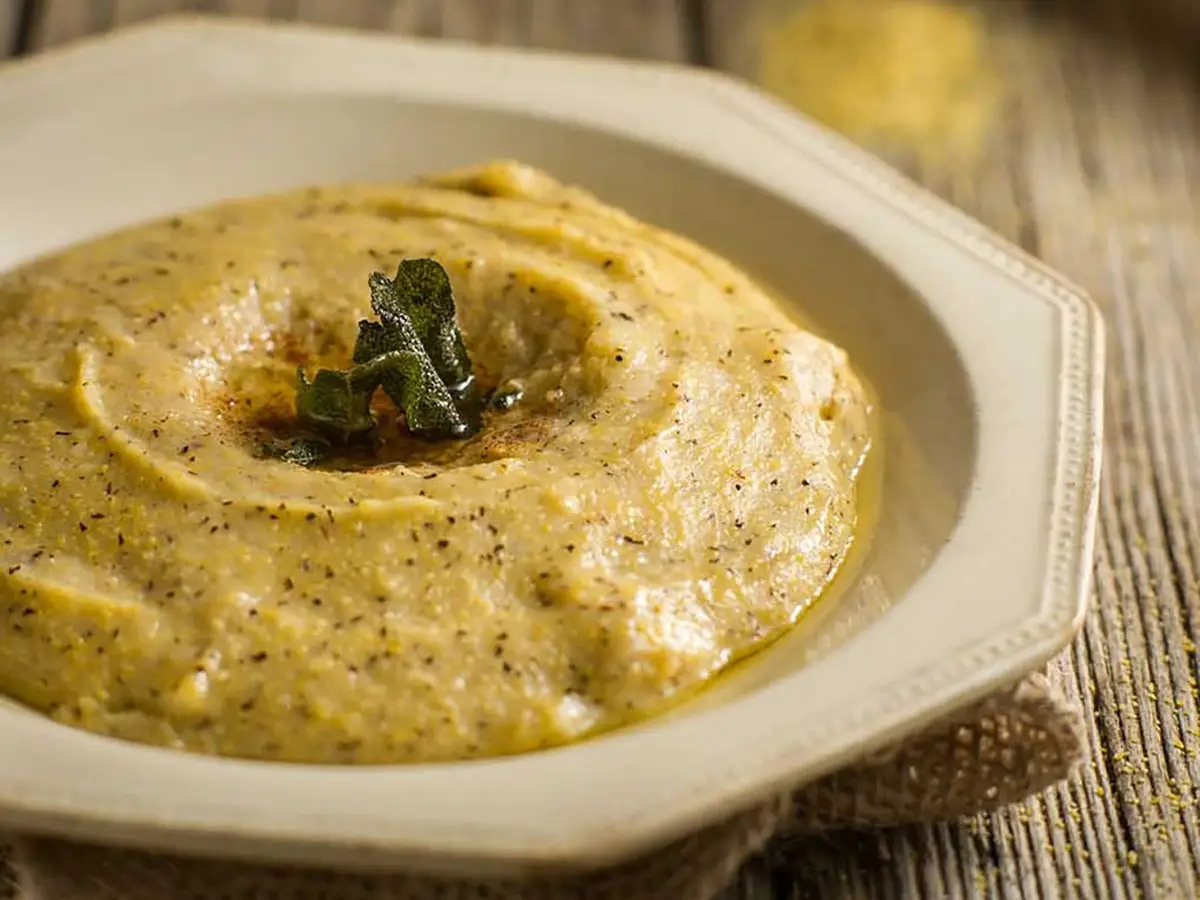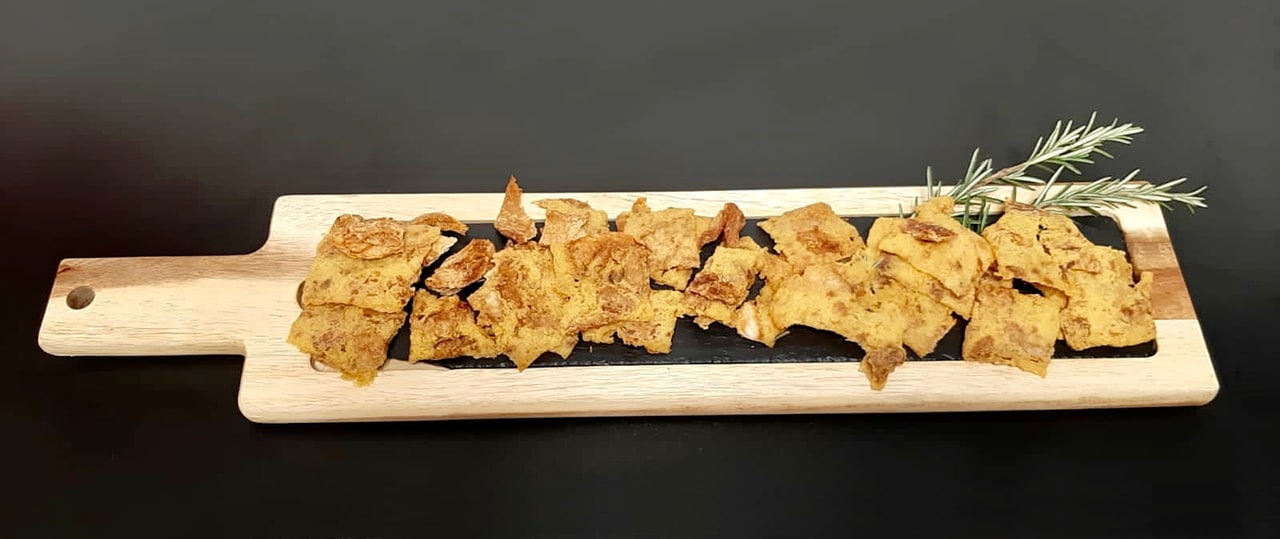Polenta and its varieties
Polenta, mainly made with corn flour, is one of the most traditional and popular dishes of the Italian gastronomic tradition, and is a food that over the centuries has combined the simplicity of the ingredients to its warm ability to satisfy both hunger and taste. In particular, it was for a long time the main dish of the poor cuisine of the northern regions of Italy, such as Piedmont, Veneto, Trentino Alto Adige, the Lombardy and the entire Alps, but it is also widespread in Emilia Romagna, Tuscany and in the mountain areas of Abruzzo, Marche, Lazio and Molise.
The most ancient reference for polenta is found in the Latin word puls, which indicated a sort of spelt-based polenta that represented the main dish of the ancient Italic peoples. Later, this food was prepared using different cereals, such as barley, rye and wheat, and in some areas also with chestnut or bean flour, ingredients that gave it a decidedly darker color. The preparation of polenta as we know it today, instead, begins following the import into the European continent of corn, which came from the Americas from the sixteenth century, which is the cereal that gives it the characteristic yellow color. It seems, in fact, that the first corn crops arose in the territory of the Republic of Venice, around the second half of the sixteenth century.

The basic recipe for polenta is to cook a mixture of water and corn flour, usually coarsely. In boiling water, previously salted in a special copper pot, the corn flour — traditionally ground in stone -, is poured in rain, and is continued to mix with a wooden tool for at least an hour. Once cooked, the polenta was poured on the kitchen table, on a special wooden board covered with a cloth and then served to the diners, and consumed — depending on the consistency — with the spoon or cut into slices with a wooden knife. Today, however, precooked maize flour is also widely used, thanks to which it is possible to prepare polenta very quickly, although with deep differences in flavor compared to the traditional version. One of the fundamental aspects of polenta is to be a dish that can be accompanied in an ideal way to a wide range of foods: from cheeses to stewed meats and game, from mushrooms to fish.

There are numerous types and different versions of polenta, which in many cases are closely linked to the individual territories of origin. Polenta, in fact, takes on different colors and flavors, starting from the countless variations not only of the raw materials used in the different Italian regions, but also ingredients and condiments, which can really be the most varied and suitable for any type of palate and taste. Basically, the flour can be coveted, that is, coarsely ground, or yellow foil, with a thin texture.

Polenta taragna
The «Taragna» is the typical version of the polenta of Bergamo, Lecco, Valtellina and Val Camonica. Its name comes from the long stick used to mix the flour in the pot that was called: tarai. In this case, the basic ingredient consists of buckwheat, thanks to which the polenta taragna takes its unmistakable dark color. The other distinctive feature is that of the cheese, which is added to the mixture during cooking. A version of the buckwheat polenta is la polenta saracena, which is prepared in the upper Val Tanaro.

Potato polenta
Potatoes replace corn flour in potato polenta, typical of Trentino. In this case, the diced potatoes are boiled in salted water, which are then crushed by mixing them with buckwheat flour. At the end add pieces of salami, cheese or even fried onions.

White polenta
White polenta is a typical version of Friuli Venezia Giulia, part of Veneto and also of Polesine. Its colour depends on the use of Biancoperla corn flour.

Polenta uncia
The area of origin is that of Lake Como for this polenta uncia — or voncia — which means «grease». It is prepared with a mixture of corn flour and buckwheat, to which is added a sauté of butter, garlic and sage, along with local cheese. In the same area is also prepared the pult, a rather soft polenta, made with corn and wheat, which is usually eaten after being dipped in milk, especially in the summer season.
There are several variations of polenta uncia, such as the Biellese one, which provides for the addition of toma cheese or maccagno, which is poured into the dish with the addition of melted butter, or like that of Piacenza — the puleinta consa — which is served in thin layers covered with sauce alternating with grated Grana Padano.

Polenta with crackling
Spread in most of the northern regions of Italy — where it changes its name depending on the area -, polenta with cracklings is prepared by joining cracklings during cooking — as happens in the Piacenza region, or even inserting the cracklings into slices of toasted polenta, as happens with that mantua.

Polenta romagnola
The paciarella, Romagna version of polenta involves the use of a mixture of fine and coarse corn flour — foil and bramata — which is mixed in the pot with cooked beans and their water. It has a liquid consistency, and is preferably seasoned with a sauce of sausage and tomato, while in mountain areas it is prepared with chestnut flour. Richer, however, is the pulenta incaséda, a more solid version, which is baked in layers with béchamel sauce, meat sauce and grated cheese.

Polenta in Central Italy
The polenta of Marche and Umbria is basically more fluid, so as to be eaten with a spoon, and traditionally served on a rectangular wooden table — the spit o spianatòra. During cooking it is processed with a special stone wooden tool called sguasciapallotti, which serves to dissolve the lumps of flour. In Tuscany polenta is also distinguished by a version fried or baked in the oven, and also for sweet polenta, made with chestnut flour. Particularly common are the versions based on game and meat sauces, and mushrooms. In the area that includes the regions of Lazio, Marche, Abruzzo and Molise, in addition, the version that provides as a condiment tomato sauce cooked with parts of the pork or sausages or, alternatively, with a fried garlic, oil and chili to cook pork cheek or bacon.
Fried polenta
Along the peninsula, from Tuscany to Sicily, there is a fried version of polenta, in some cases cut into triangles or rectangles, called scagliozzi in Naples but also in Puglia and Messina.

The frascatula lucana
In Basilicata is prepared the frascatula — also widespread in Calabria and Sicily — with corn flour, a potato and lard of pork. The traditional dressing is tomato sauce, but it can also be accompanied by cotechino and sausage, and in some cases it is served with cooked wine.
Sardinian polenta
In Sardinia polenta has an ancient history, and its preparation was strongly linked to the use of durum wheat but also chestnut flour and acorns. Today, the yellow polenta alla sarda includes the use of sausage, pecorino cheese, bacon and vegetables such as onion, garlic, carrots and parsley.

Polenta cròpa
This particular type of polenta is native to the Val d’Arigna, in the heart of the Orobie Alps, in the Valtellina area. Its typicality is linked to the fact, like the taragna, it is prepared with buckwheat, but the cooking is done in the cream, along with mashed potatoes and cheese.
Cover Image: donnamoderna

